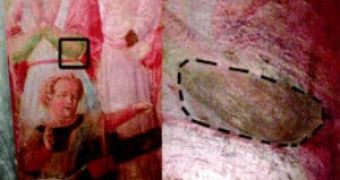Nanotechnology has found yet another application in our lives and helps us recover some of the most precious works of art from as early as the Renaissance. It's a new development and a simple and cheap method for cleaning up paintings.
The new method works like a nano scrub, using oil-in water nanocontainers to remove grime that has deposited on the surface over the centuries, or damaged after floods and even past attempts to restore the old paintings that were unsuccessful or even caused more harm.
Professor Piero Baglioni, a scientist at the University of Florence has just published a new paper titled Oil-in-Water Nanocontainers as Low Environmental Impact Cleaning Tools for Works of Art: Two Case Studies.
In it, he describes the new technique as consisting of tiny droplets of cleaning agents suspended in water to form microemulsions. Acrylic polymers and highly insoluble inorganic deposits containing organic materials can be solubilized in oil-in-water microemulsions from nonionic surfactants and that a complete cleaning of an acrylic-contaminated painting can be successfully achieved.
The results of the new method are excellent, having a gentler cleaning action and thus being less prone to damaging fragile surfaces. Moreover, they employed up to 95 percent less organic solvent, which has a milder effect on the environment.
"These innovative systems are very attractive for the low amount of organic solvent. . . and the very efficient and mild impact of the cleaning procedure on the fragile painted surfaces," Baglioni wrote in his paper.
Experimental applications have succeeded in restoring a Renaissance painting damaged by previous restoring work and a fresco in Florence, damaged by the 1996 flooding of the Arno River.
So, they hope that the new oil-in-water nanocompartimentalized systems could be the weapon of choice against artwork aging, with an increased performance and less impact on the environment.

 14 DAY TRIAL //
14 DAY TRIAL //